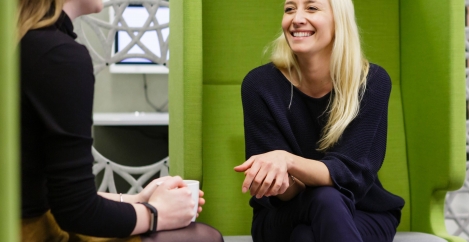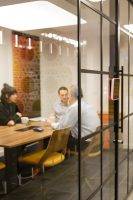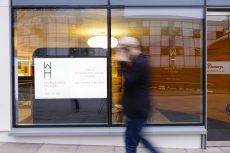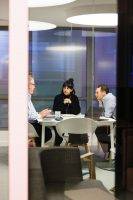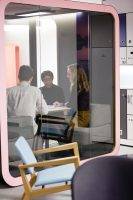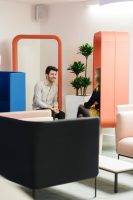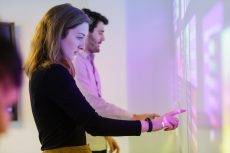March 12, 2019
Insight promotion: creating a frictionless (not flawed) workplace experience
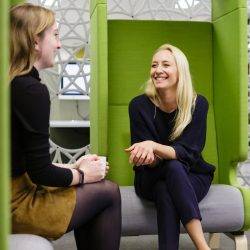 To mark the launch of Workplace House, a multi-brand co-creation space in the heart of Clerkenwell, a consortium of participating brands hosted an event to explore the factors that contribute towards a good (and not so good) workplace experience.
To mark the launch of Workplace House, a multi-brand co-creation space in the heart of Clerkenwell, a consortium of participating brands hosted an event to explore the factors that contribute towards a good (and not so good) workplace experience.
“Before we begin”, pondered AWA’s Andrew Mawson, one of the founding partners, “what constitutes an experience?”
“Something that’s memorable, emotional, participatory…”, retorted the audience.
“Big and little events, moments, gestures and encounters that shape feelings, thoughts, behaviours.”
Simply put, then, an experience is some kind of occurrence that leaves an impression. It’s associated with senses, emotional responses, reactions… and it’s potentially different for everybody because we’re not carbon copies of each other. Designing an experience for a community involves recognising that the experience in question is being consumed by people in different ways.
“A sense of community and belonging is important in the design of today’s workplace,” commented fellow event host, Ashley Hayward, managing director of Kinnarps UK, whose Clerkenwell HQ has been redeveloped as Workplace House. “That feeling is created through the provision of great fixtures and fittings combined with a holistic approach to experience. That’s why it is important to consider all the requirements of a modern fit-out as one, linked and complementary process.”
[perfectpullquote align=”right” bordertop=”false” cite=”” link=”” color=”” class=”” size=””]If organisations are to have an edge over their competitors, if they’re to attract and retain the best people, then they need to think about experience in a holistic way[/perfectpullquote]
For Mawson and Hayward, this means we have to treat the workplace user as a consumer of experience – almost to the point where we should be designing and building business hotels with a very customer-focussed approach. It’s not enough to provide functionality. If organisations are to have an edge over their competitors, if they’re to attract and retain the best people, then they need to think about experience in a holistic way.
“Smart business leaders know that if their organisations are to stand a chance of gaining competitive advantage, they have to create frictionless work environments that emanate personality, drive culture and encourage people to work in a way that yields a better outcome,” said Mawson. “With organisations in the knowledge economy now essentially recruiting for ‘brainpower’, the goal should be to create work environments that fuel rather than consume cognitive energy.”
As per AWA’s research, many factors affect an employee’s ability to do their job – these include a person’s lifestyle habits such as sleep, hydration, nutrition, and general fitness, but also environmental elements like lighting, noise, air quality and temperature. All of the above can aid or hinder mental performance if not carefully managed. We only have one brain, said Mawson, and the majority of its capacity is devoted to managing our physiology: our digestion, our immune and cardiovascular system, our body temperature and so on. So, anything else that places a burden on our brains consumes cognitive energy.
If someone is too hot, their brain has to help their body cool down. If someone cannot see well because of poor light or computer glare, the brain has to deploy capacity to ‘guess’ what it’s looking at. If someone is being bombarded by a deluge of noise, their brain has to work harder to shut it out. If someone has to fight with a faulty laptop, the same is true. All of these ‘experience failures’ detract from the pool of cognitive energy a person can devote to business-related intellectual tasks.
A frictionless experience
Poorly designed workplaces, then, can result in wasted ideas, lost light-bulb moments, dwindling enthusiasm and mental fatigue. You can’t innovate if you can’t think. One fundamental aspect of workplace management should be the creation of fault-free workplace experiences that are frictionless and place no burden on a person’s cognitive capacity resources.
“More and more organisations are encouraging their workforce to share space and rub shoulders with outside influencers – to benefit from different perspectives within one neighbourhood,” said Hayward. “But with so many different personalities and corporate cultures mixing together, it can be a challenge to create experiences that all enjoy and welcome. The goal is to create a workplace that allows all staff to fulfil their potential, in a familiar and comfortable environment. It is as much about removing obstacles as it is providing opportunities.”
For the founders of Workplace House – AWA, Kinnarps, Christy Carpets, Ascentae, Avocor and Planet Partitioning – the workplace is about the totality of the environment an employer provides their employees. It encompasses the tech, tools, practices and processes; the physical, social and virtual; and the management frameworks, organisational structure and culture that influences the way people feel and perform. The collective, recognising that the experience provided by an employer reflects the personality of the company in question, its brand image, its commitment to employees and to the community in which it operates, has sought to create a frictionless workplace that allows people to be the best that they can be.
“Workplace management is about designing and delivering multi-faceted, minute-by-minute, multi-sensory experiences that create an emotional response,” said Mawson. “It encompasses thinking about journeys and destinations, the fusion of space, information, services, and how these reflect organisational personality, support human effectiveness, and are attractive to target employees. And it involves removing all the obstacles that get in the way of good work.”





